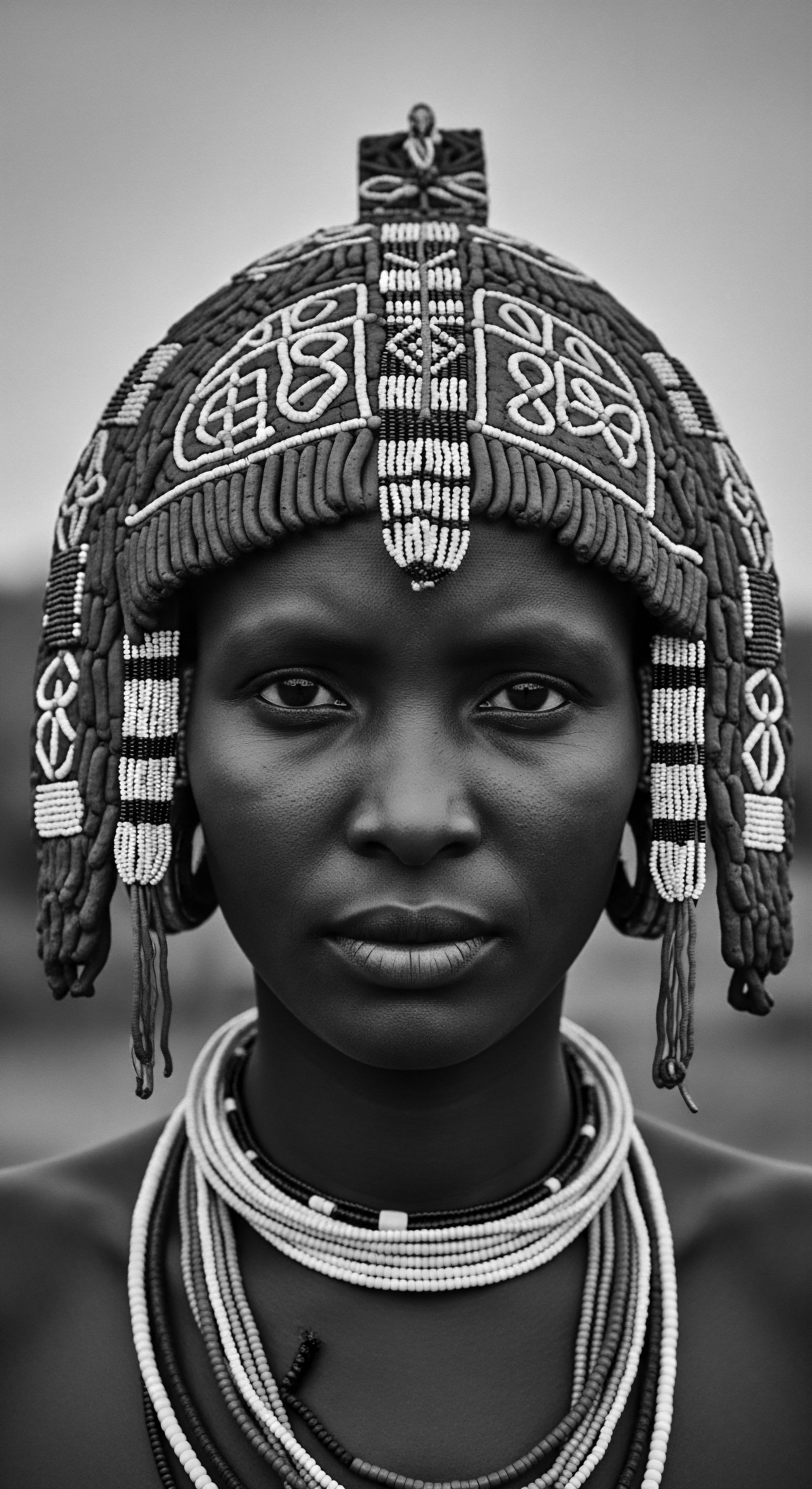
Fundamentals
Malassezia yeast, often referred to as a collective of lipid-dependent fungi, represents a naturally occurring component of the human skin’s complex microbial ecosystem. This microscopic organism typically resides within the sebaceous glands, those tiny oil-producing structures nestled in our skin, especially abundant on the scalp. Its fundamental nature is that of a commensal organism, meaning it generally coexists with us without causing harm, playing a silent role in the cutaneous landscape. This understanding serves as the bedrock for recognizing its subtle yet significant influence on scalp health, particularly for those with textured hair.
The definition of Malassezia extends beyond simple presence; it encompasses its unique dependency on lipids—the natural oils secreted by our skin. This characteristic shapes its behavior and its interaction with the scalp environment. When this delicate balance of oil production, moisture, and microbial populations shifts, Malassezia can transition from a benign resident to a contributing factor in various scalp conditions.
For generations, communities with textured hair have developed intricate cleansing rituals and nourishing practices, often unknowingly, influencing the very environment where Malassezia thrives or remains in equilibrium. These practices, passed down through the ages, attest to an intuitive knowledge of scalp care that predates scientific identification of specific microorganisms.
Understanding the basic attributes of this yeast helps us appreciate the traditional wisdom surrounding textured hair care. Many ancestral methods, whether through specific herbs, natural oils, or unique washing routines, aimed to purify the scalp and maintain a healthy, balanced environment. These practices, while not framed in microbiological terms, aimed for holistic wellness, fostering conditions where Malassezia remained a silent partner rather than an unwelcome guest.
- Lipid Dependency ❉ Malassezia yeasts require fatty acids for their growth, making oil-rich areas like the scalp their preferred habitat.
- Commensal Nature ❉ Under normal circumstances, Malassezia lives harmlessly on human skin.
- Dandruff Link ❉ An overgrowth of certain Malassezia species is widely associated with common scalp flaking, known as dandruff.
- Seborrheic Dermatitis ❉ Malassezia species are implicated in seborrheic dermatitis, a chronic inflammatory skin condition often affecting the scalp.
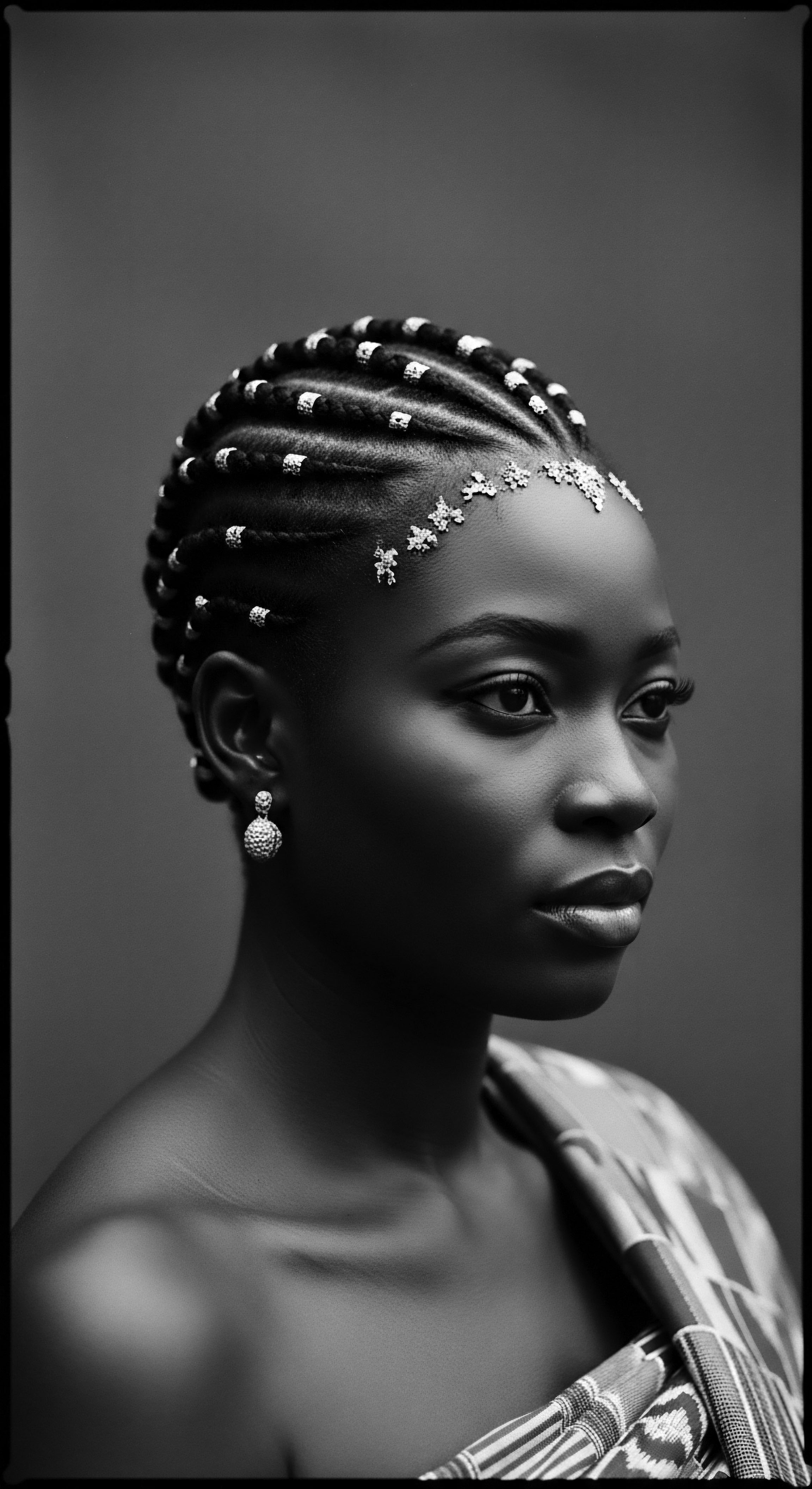
Intermediate
Exploring the intermediate meaning of Malassezia yeast requires a deeper gaze into its dynamic relationship with the scalp, particularly the textured hair strands that emerge from it. These yeasts, though naturally occurring, become clinically significant when their growth outpaces the scalp’s natural defenses, a phenomenon often tied to excess sebum. The intricate nature of textured hair, with its unique curl patterns and density, can sometimes create microclimates on the scalp that either support or deter the proliferation of these yeasts.
For instance, tighter coils can impede the natural travel of sebum down the hair shaft, leading to an accumulation on the scalp, an environment ripe for Malassezia expansion. This aspect of textured hair requires a nuanced approach to care, one that acknowledges both biological realities and the heritage of hair practices.
The distinction between Malassezia as a mere inhabitant and as a contributor to conditions like seborrheic dermatitis or severe dandruff lies in this delicate balance. When Malassezia overgrows, it breaks down the triglycerides in sebum into irritating free fatty acids, leading to inflammation, itching, and flaking. The historical traditions of hair care, particularly within Black and mixed-race communities, often involved intentional or unintentional methods of managing scalp oil, from various cleansing clays and traditional soaps to specific protective styles that influenced air circulation to the scalp. These methods, refined over generations, reflect an ancestral wisdom about maintaining a healthy scalp environment that supported overall hair vitality, even without the modern understanding of microbial interactions.
The significance of Malassezia for textured hair thus extends beyond mere biology; it connects to how cultural practices have shaped the scalp’s ecosystem. The wisdom passed down through families, encompassing everything from oiling rituals to styling techniques, offered tangible benefits, often by keeping the scalp clean, reducing oil buildup, or introducing ingredients with inherent clarifying properties.
Traditional hair care practices often intuitively managed scalp conditions by influencing the environment where Malassezia yeast resides.
Consider the shift in hair care practices over time. In contemporary settings, the reliance on heavy butters and infrequent washing, sometimes advocated without full consideration of individual scalp needs, can inadvertently create conditions more favorable for Malassezia overgrowth. This highlights a critical intersection of modern practices and ancestral wisdom ❉ recognizing the core purpose of traditional methods to maintain scalp health and adapting them thoughtfully for present-day textured hair needs.
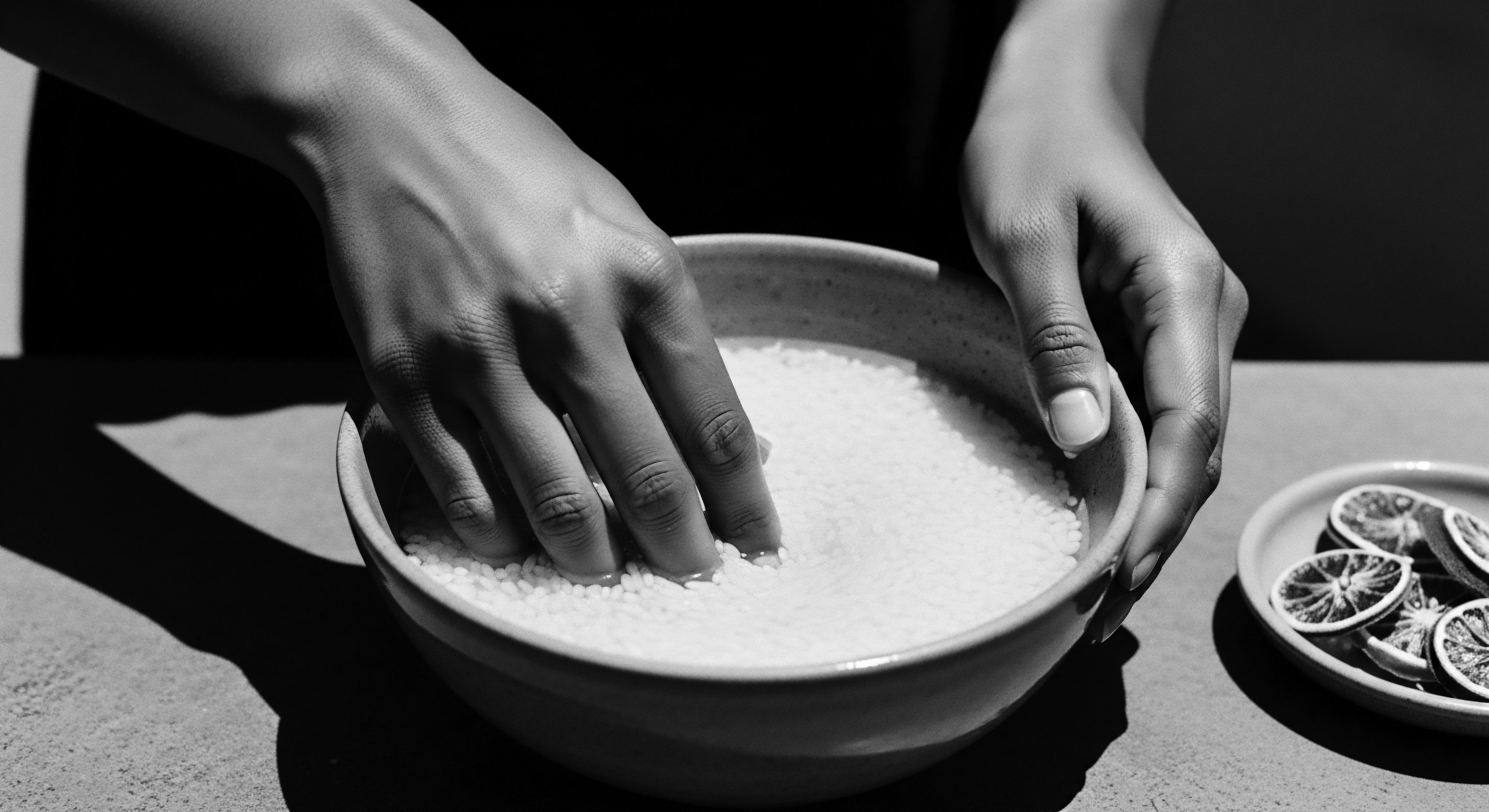
The Scalp’s Ecosystem and Malassezia
The scalp is a vibrant ecosystem where microorganisms, sebum, sweat, and skin cells interact constantly. Malassezia thrives in this environment, particularly in areas rich in sebaceous glands. When sebum production is high, these yeasts have an abundant food source. For individuals with textured hair, the unique architecture of hair follicles and strands can influence how sebum is distributed.
Tight curls can create micro-environments where sebum and moisture become trapped near the scalp, providing a humid, lipid-rich habitat for Malassezia. This physical reality underscores why a balanced approach to scalp cleansing, respecting the hair’s need for moisture while preventing excess buildup, has always been vital.
| Aspect of Care Cleansing Agents |
| Traditional Practices (Heritage Focus) Use of natural clays, fermented plant washes, or saponin-rich plant extracts like African black soap. These often had inherent purifying qualities. |
| Modern Approaches (Scientific Insight) Shampoos with specific antifungal agents (e.g. pyrithione zinc, ketoconazole), or gentle surfactants designed to remove oil without stripping. |
| Aspect of Care Oiling & Conditioning |
| Traditional Practices (Heritage Focus) Application of light oils (e.g. palm oil, shea butter) to the scalp and hair, often massaged in to stimulate circulation. |
| Modern Approaches (Scientific Insight) Conditioners and scalp treatments that hydrate and soothe, often avoiding heavy ingredients on the scalp to prevent buildup. |
| Aspect of Care Washing Frequency |
| Traditional Practices (Heritage Focus) Varied by community and climate, sometimes less frequent due to labor-intensive processes, but often coupled with daily dry cleansing or scalp rubs. |
| Modern Approaches (Scientific Insight) Recommended regular washing, especially for active individuals or those prone to oiliness, with considerations for hair texture and product choice. |
| Aspect of Care These varied approaches highlight a continuous quest for scalp balance, with ancestral methods providing foundations for today's understandings. |
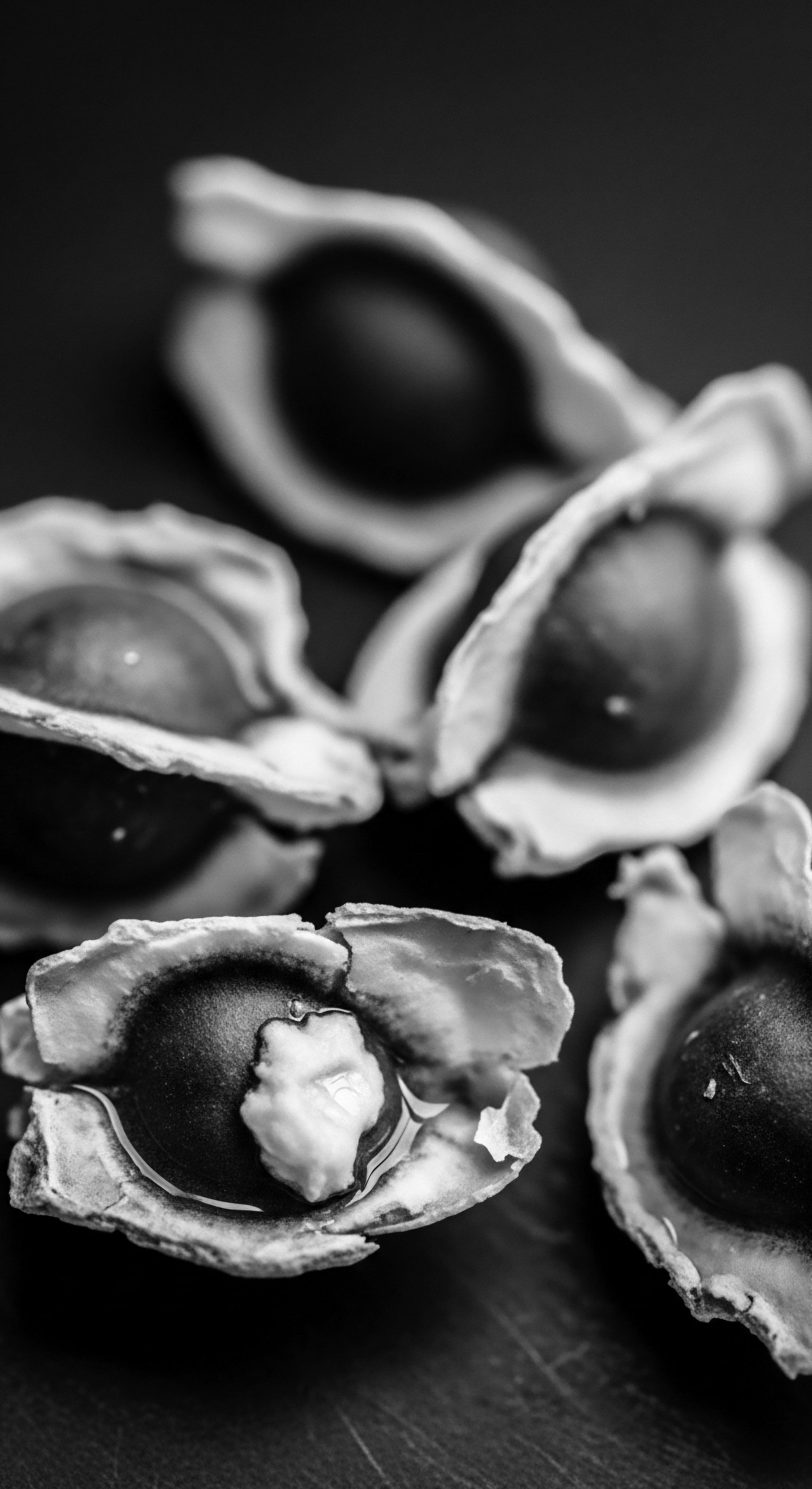
Academic
The academic definition and meaning of Malassezia yeast extend into the realm of profound biological complexity, revealing a genus of lipid-dependent, dimorphic fungi that form a ubiquitous and often symbiotic part of the human skin’s mycobiome. This intricate relationship, where Malassezia species primarily reside in the fatty acid-rich environments of the skin, such as the scalp, face, and trunk, reveals a co-evolutionary dance spanning millennia. Their existence hinges on the skin’s lipid metabolism, as most Malassezia species are auxotrophic for exogenous fatty acids, meaning they cannot synthesize these essential nutrients themselves. Their ability to transition between a yeast-like (budding) form and a hyphal (filamentous) form is a key aspect of their pathogenicity, often observed during symptomatic overgrowth.
The clinical significance of Malassezia is particularly pronounced in the context of various dermatological conditions, most notably seborrheic dermatitis and dandruff. These conditions are not simply a matter of the yeast’s presence, but rather a complex interplay of host susceptibility, sebaceous lipid composition, and the metabolic activities of Malassezia itself. Malassezia species, especially M. globosa and M.
restricta, are known to secrete lipases that break down triglycerides in sebum, releasing unsaturated fatty acids that can irritate the scalp and provoke an inflammatory response in susceptible individuals. This irritation manifests as scaling, redness, and itching, symptoms that have been observed and managed in various forms across human history, long before the microscopic agents were identified.
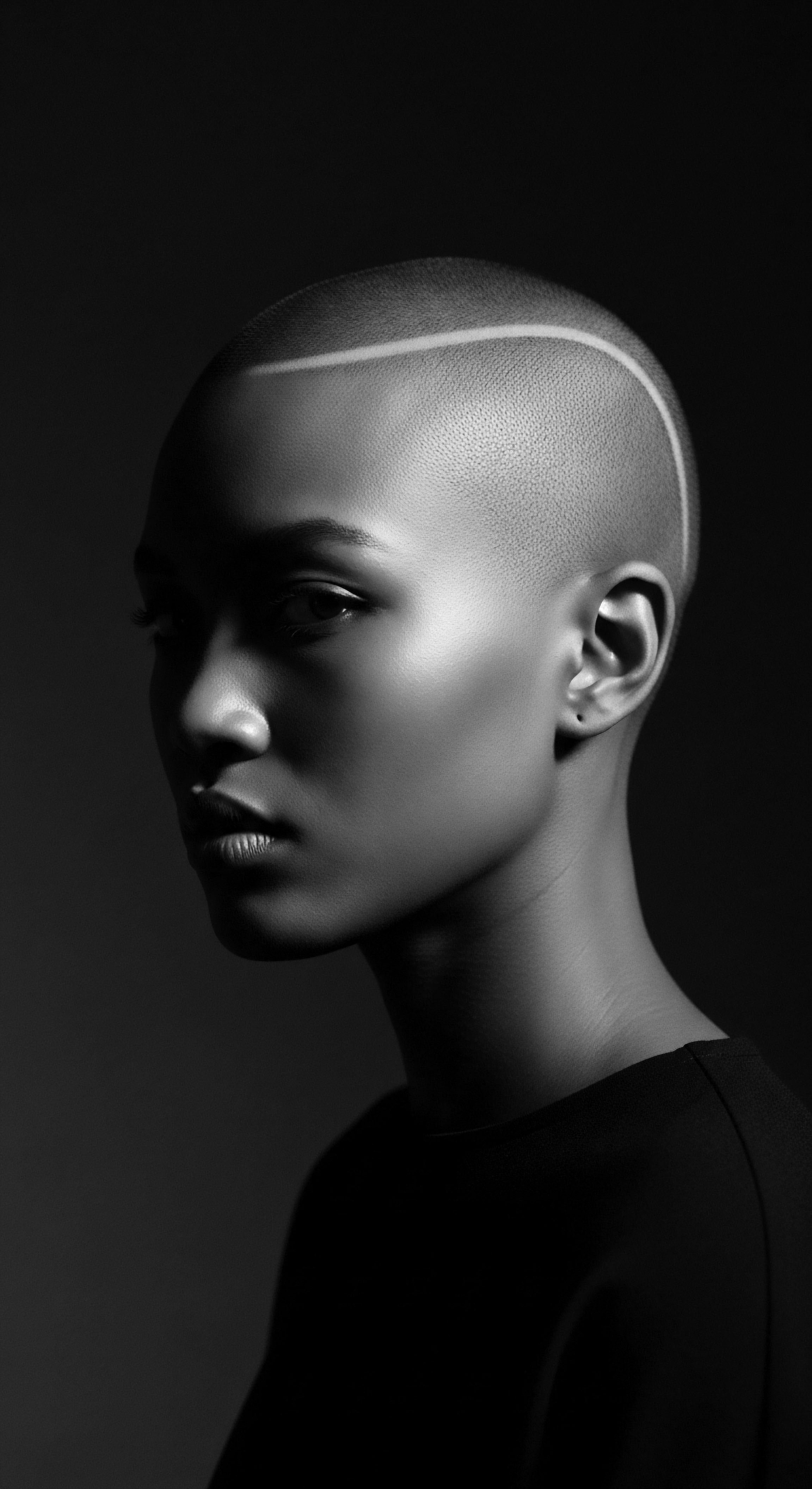
Ancestral Wisdom and Malassezia Management
Within the rich tapestry of textured hair heritage, the management of scalp conditions that we now associate with Malassezia has deep roots. Ancestral practices, often guided by intuitive observation and passed through oral tradition, cultivated a delicate balance between cleansing and nourishing the scalp. While the understanding of microbial ecology was absent, the knowledge of which plant materials and rituals promoted a healthy, comfortable scalp endured. These traditional methods, though not explicitly targeting “Malassezia yeast,” often created an environment less conducive to its symptomatic overgrowth, demonstrating an inherent wisdom in the care of hair and scalp.
One compelling example lies in the historical use of various botanical agents with empirically observed antifungal or anti-inflammatory properties, particularly those incorporated into cleansing and scalp treatments across the African diaspora. Consider the widespread use of African Black Soap , or “ose dudu” in Yoruba communities, renowned for its cleansing and anti-inflammatory properties. This traditional soap, typically crafted from the ash of plantain peels, cocoa pods, and palm leaves, combined with nourishing oils like shea butter and coconut oil, has been passed down through generations in West Africa. Modern scientific understanding now clarifies that the plantain and cocoa pod ash contribute antibacterial properties, and significantly, African Black Soap is documented to possess antifungal properties effective in minimizing dandruff, often linked to Malassezia overgrowth.
Its ability to regulate sebum production and gently cleanse without excessive stripping supports a healthier scalp microbiome. This centuries-old practice, while rooted in holistic wellness and readily available natural resources, offers a powerful testament to ancestral knowledge in managing scalp conditions that Malassezia can aggravate.
The enduring legacy of African Black Soap exemplifies how ancestral practices, without direct scientific insight into Malassezia, effectively managed scalp health through natural antimicrobial properties.
Furthermore, a study by Akerele et al. (2024) on plants used in traditional phytotherapy for hair and scalp disorders in Nigeria highlighted several species with known antimicrobial and anti-dandruff properties, emphasizing that indigenous knowledge often provides effective solutions for scalp health. While specific Malassezia efficacy was not the focus of historical texts, the observed improvements in conditions like dandruff point to a practical, albeit unarticulated, management of the underlying microbial balance. The application of certain herbal extracts and oils, often performed with meticulous care during communal grooming rituals, reflects a deep appreciation for the scalp as the foundation of healthy hair.
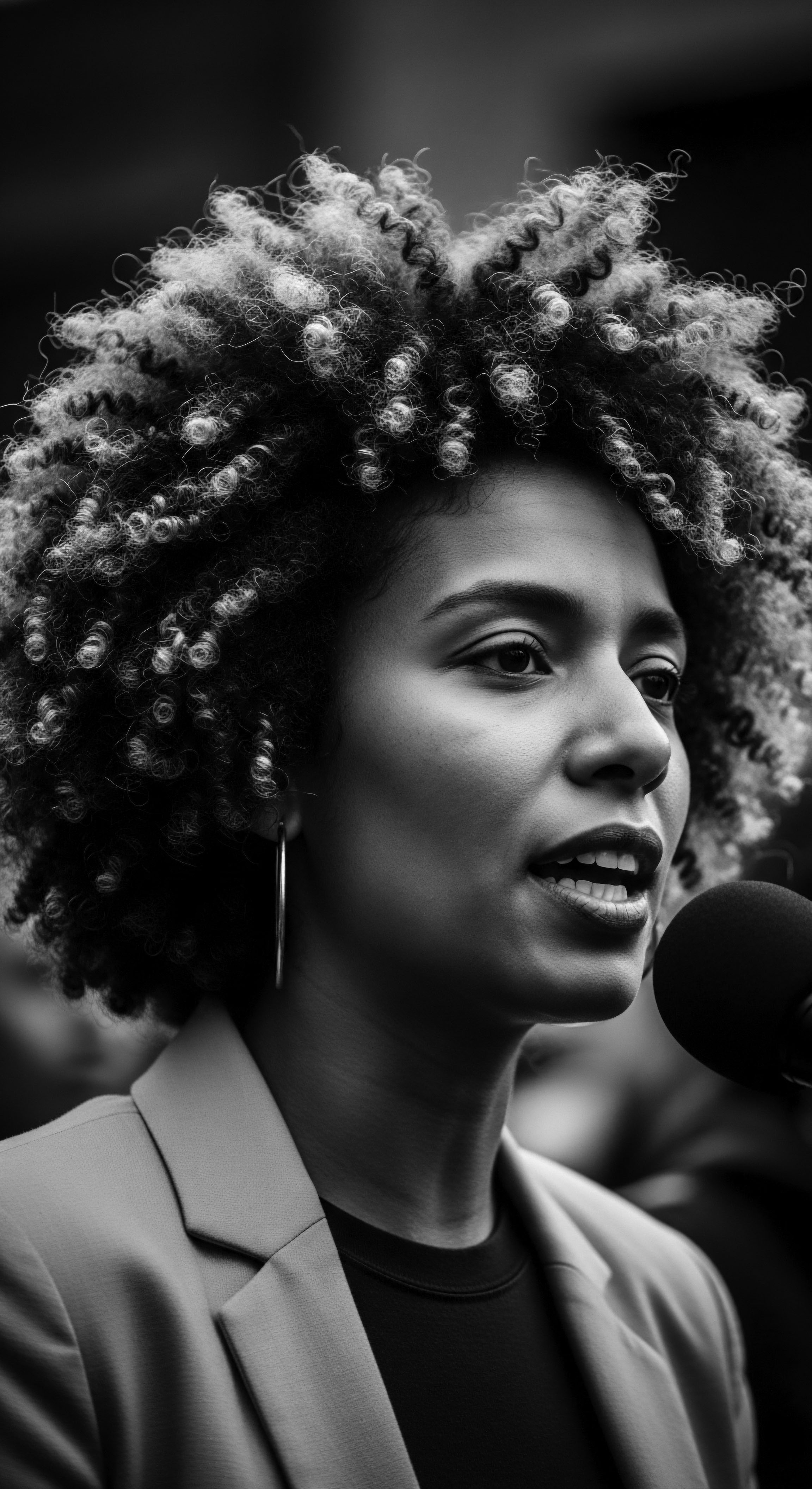
Interconnected Dynamics and Modern Interpretations
The contemporary academic interpretation of Malassezia’s role in textured hair care acknowledges the unique physiological attributes of these hair types. Tighter curl patterns can, in certain circumstances, lead to greater sebum accumulation on the scalp, making it a more hospitable niche for Malassezia. Moreover, traditional styling practices, such as frequent protective styles or extensive braiding, while beneficial for hair length retention, can sometimes reduce the frequency of thorough scalp cleansing, potentially exacerbating Malassezia-related concerns if not managed with intentional care.
The meaning of Malassezia, therefore, transcends mere biological classification; it serves as a lens through which to examine the interplay between human physiology, environmental factors, and cultural practices. Understanding its lipid dependency and its potential to cause inflammation helps us appreciate the ingenuity embedded in ancestral hair care. For example, traditional emphasis on scalp massage, the use of clarifying clays, or plant-based infusions could have contributed to both mechanical removal of flakes and modulation of the scalp environment, directly impacting Malassezia populations.
The academic inquiry into Malassezia also explores its genetic diversity, with currently 17 recognized species within the genus, each with slightly different metabolic preferences and pathogenic potential. This underscores the complexity of scalp conditions; a condition might be driven by particular Malassezia species or even specific genotypes within those species, influencing treatment efficacy. Research continues to delineate the precise mechanisms by which Malassezia interacts with the host immune system, particularly in the context of inflammation and barrier disruption. The recognition that oxidative stress, a byproduct of Malassezia activity, contributes to scalp conditions like seborrheic dermatitis and can alter hair keratinization further solidifies its systemic relevance.
Looking at textured hair heritage through this academic lens reveals how ancestral practices, honed by generations of observation and experiential knowledge, offered practical, often intuitive solutions to common scalp challenges. These solutions, from the saponins in African black soap to the specific properties of plant extracts, often possessed inherent antimicrobial or anti-inflammatory characteristics that would have modulated the Malassezia population and its irritating metabolites, ensuring scalp comfort and supporting the vitality of textured strands.
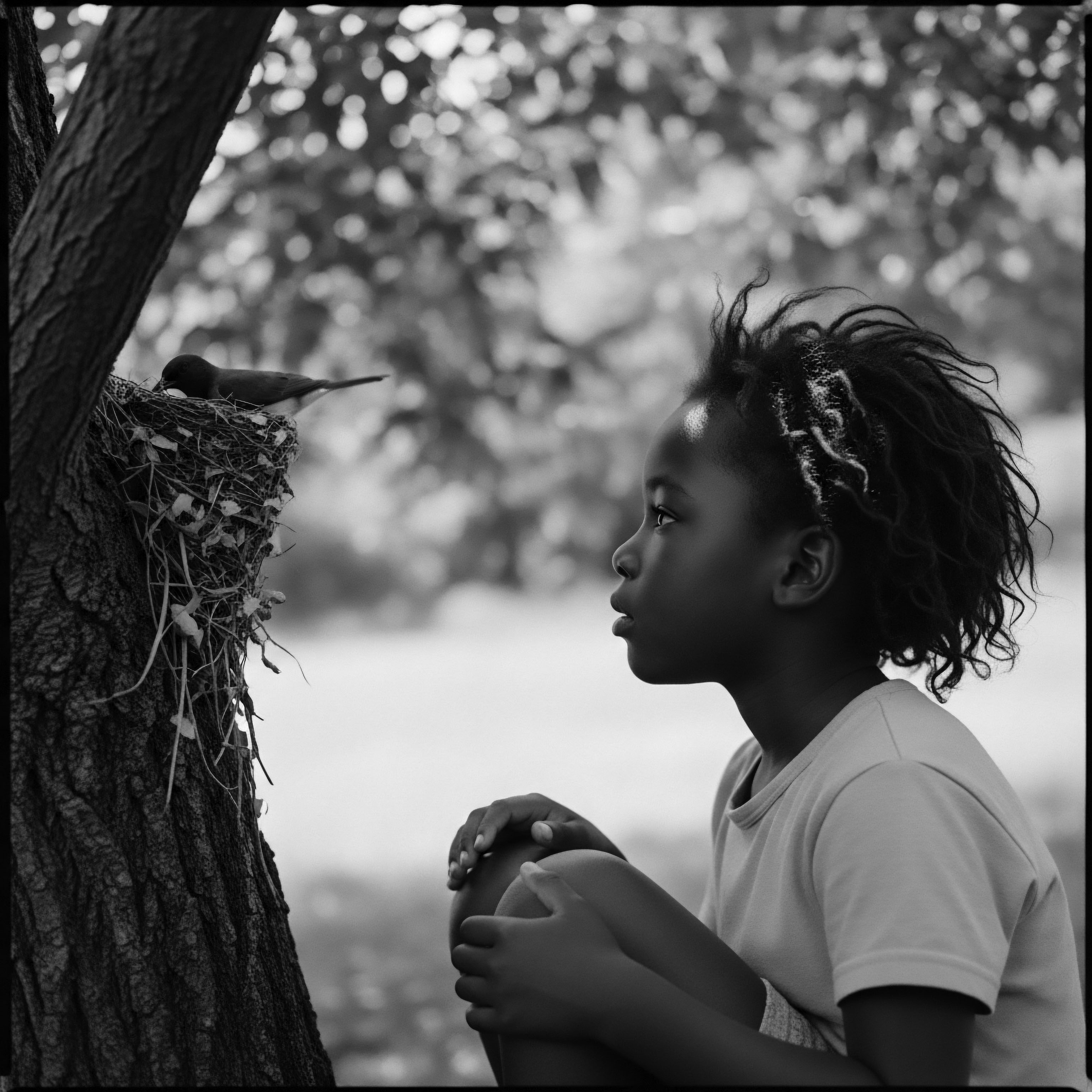
Reflection on the Heritage of Malassezia Yeast
As we gaze upon the intricate world of Malassezia yeast, its journey from elemental biology to a profound understanding within the context of textured hair heritage becomes a resonant narrative. This tiny organism, so often discussed in clinical terms, takes on a deeper significance when viewed through the lens of ancestral practices and the enduring resilience of Black and mixed-race hair traditions. It whispers of a continuous thread of knowledge, woven through time, where communities instinctively sought harmony with their environment, even without dissecting its microscopic inhabitants. The story of Malassezia, in this light, is not merely one of scientific discovery; it mirrors the unwavering spirit of those who nurtured their strands, understanding that true beauty springs from a wellspring of health and cultural reverence.
Our exploration unveils that the ancestral wisdom held invaluable insights, often passed down as cherished rituals, that implicitly addressed the very conditions Malassezia can influence. The careful selection of natural elements, from cleansing clays to fortifying oils, represented an intuitive dermatological science. These practices, honed over centuries, created a legacy of care that sought to balance the scalp’s delicate ecosystem, allowing textured hair to flourish, untroubled by discomfort. It calls us to reconsider the simplistic divisions between “ancient” and “modern,” revealing a rich continuum where ancestral care laid foundational pathways for our current understanding of scalp health.
The future of textured hair care, then, feels like a deliberate return to source, yet informed by contemporary insights. It acknowledges the nuanced interplay between our biological blueprint, the environmental influences that shape our skin microbiome, and the profound cultural heritage embedded within each strand. This reflection on Malassezia yeast invites us to honor the deep-seated wisdom of our forebears, integrating their knowledge with today’s scientific advancements, forging a path that ensures textured hair is not only vibrant and beautiful but also deeply connected to its ancestral roots. We remember that the soul of a strand lies not just in its curl or coil, but in the echoes of generations of care that sustained its vitality.
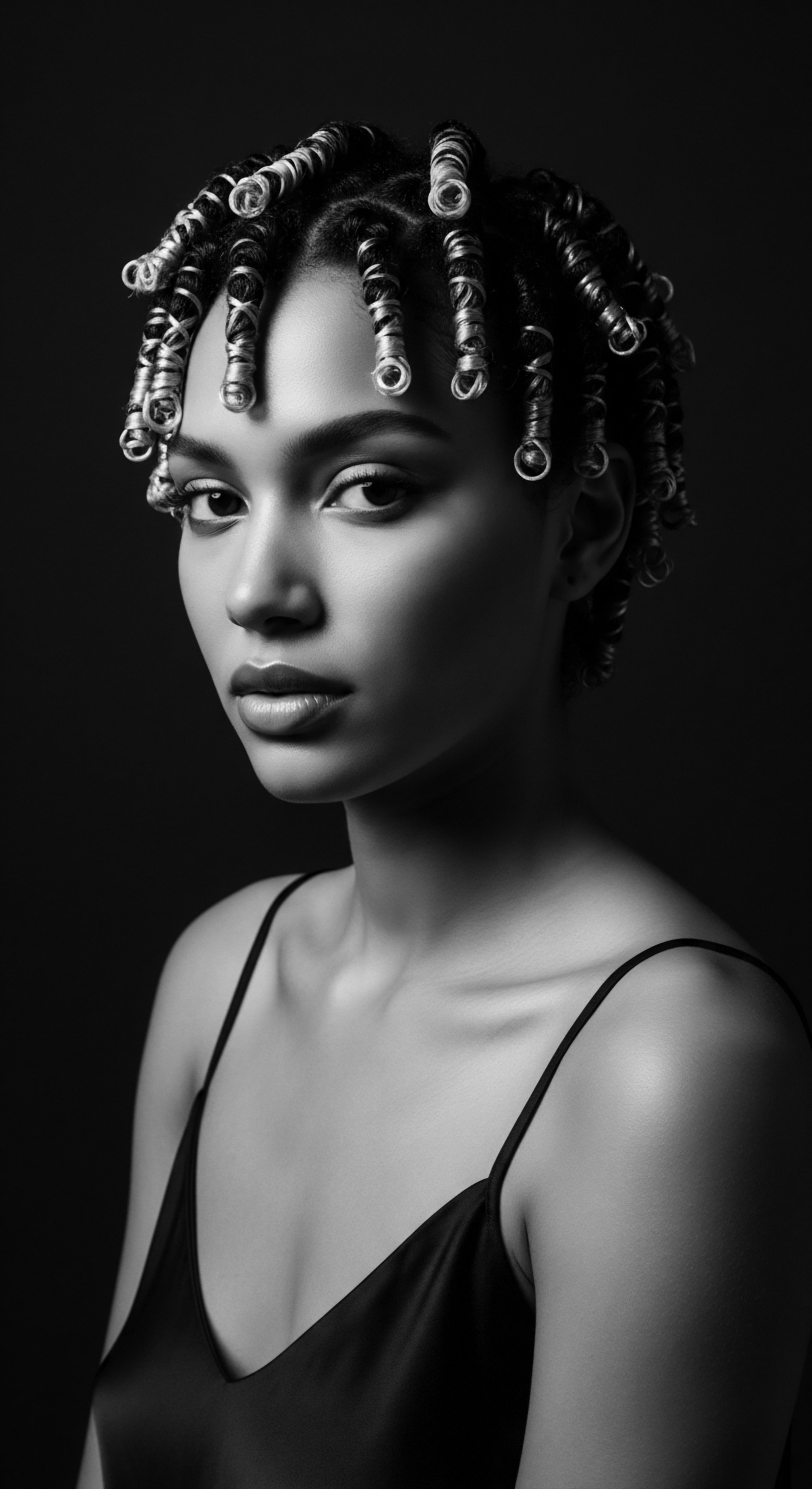
References
- African black soap ❉ What to know about. Modara Naturals. (2022).
- Pygeum bark ❉ Africa’s dandruff solution secret. NewsBytes. (2025).
- African black soap hair and scalp treatment. Nku Naturals. (2023).
- Malassezia. EBSCO Research Starters.
- Cosmetopoeia of African Plants in Hair Treatment and Care ❉ Topical Nutrition and the Antidiabetic Connection?. MDPI. (2025).
- Ancient African beauty secrets. Lovinah Skincare. (2025).
- Dyeing with Camwood (Baphia nitida). Shepherd Textiles.
- CAMWOOD POWDER. PRIMESIDE INDUSTRIES & TECHNOLOGIES.
- Malassezia ecology, pathophysiology, and treatment. Medical Mycology – Oxford Academic. (2018).
- Camwood ❉ 5 health benefits of Sandalwood/Osun you didn’t know. Pulse Nigeria. (2022).
- Weekly hair washing ❉ The recommended solution for women with afro-textured hair to alleviate dandruff and scalp discomfort. ResearchGate.
- Plants used for hair and skin health care by local communities of Afar, Northeastern Ethiopia. Ethnobotany Research and Applications. (2025).
- She tried an ancient African hair mask—here’s what happened overnight!. YouTube. (2025).
- Malassezia infections. DermNet.
- The history of African Black Soap. Bramble Berry.
- Powerful African and Asian Herbs for Hair Growth ❉ Nature’s Remedies fo. AYANAE. (2024).
- The amazing benefits of Black Soap for Natural Hair. Reagan Sanai. (2022).
- Neem ❉ Overview of the plant and its uses. Niem-Handel.
- Ethnobotanical Survey of Medicinal Plants used in the Treatment and Care of Hair in Karia ba Mohamed (Northern.
- The real science behind African Black Soap Shampoo for hair growth. (2025).
- Cosmetopoeia of African Plants in Hair Treatment and Care ❉ Topical Nutrition and the Antidiabetic Connection?. ResearchGate. (2024).
- Malassezia Furfur. StatPearls – NCBI Bookshelf. (2023).
- CAMWOOD POWDER. Zawadi Naturals. (2022).
- Medicinals – Neem. NCBI Bookshelf.
- Chronic Diseases Associated with Malassezia Yeast. PMC – PubMed Central. (2021).
- Development and Evaluation of Herbal Hair Serum ❉ A traditional way to Improve Hair Quality. (2021).
- Correlation of Malassezia species with clinical characteristics of pityriasis versicolor. Elektronische Hochschulschriften der LMU München. (2014).
- Plants used in traditional phytotherapy for hair care by tribals in Sabarkantha district, Gujarat, India.
- Polyherbal Hair Oil Used Against Dandruff-Causing Fungus, Malassezia Furfur.
- Cosmetic Ethnobotany Used by Tribal Women in Epe Communities of Lagos State, Nigeria. Juniper Publishers. (2024).
- Camwood benefits for skin. Adunni Organics. (2020).
- Neem Oil – A Powerful Medicinal Oil – Uses & Benefits for Skin & Hair. (2017).
- Insights on the Impact of Scalp Barrier Condition on Hair Health. Journal of Drugs in Dermatology. (2025).
- A review of indigenous therapies for hair and scalp disorders in Nigeria. PubMed.
- Three Etiologic Facets of Dandruff and Seborrheic Dermatitis ❉ Malassezia Fungi, Sebaceous Lipids, and Individual Sensitivity. ResearchGate.
- Report Review on Neem.
- Neem (Azadirachta indica) ❉ Prehistory to contemporary medicinal uses to humankind. PMC.
- Presentations of Cutaneous Disease in Various Skin Pigmentations ❉ Seborrheic Dermatitis.
- Hair Oils May Worsen Seborrheic Dermatitis in Black Patients. Karger Publishers. (2023).
- Seborrheic Dermatitis in Skin of Color ❉ Clinical Considerations. ResearchGate. (2019).
- Approach to Treating Seborrheic Dermatitis in Skin of Color. PMC.
- Seborrheic Dermatitis in Skin of Color ❉ Clinical Considerations. JDDonline.
